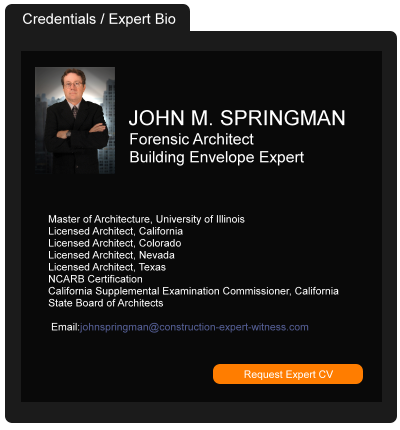Public Contract Code 9204 – A New Mandatory Claims Process for Contractors and Subcontractors – and a Possible Trap for the Unwary
March 22, 2017 —
Alex R. Baghdassarian & Joseph S. Sestay – Peckar & Abramson, P.C.New California legislation affecting public works contractors was adopted pursuant to Assembly Bill 626, sponsored by the Union Trade Contractors Association of California and endorsed by various trade and contractor associations including the AGC. AB 626, which was intended to assist contractors in presenting claims against public agencies, affords new opportunities, and some potential pitfalls, to contractors and subcontractors submitting claims to public owners.
The legislation, codified at California Public Contract Code (PCC) section 9204, is effective for public works contracts entered into after January 1, 2017. All public entities (including the CSUS and the UC system), other than certain Departments of the State (CalTrans, High-Speed Rail Authority, Water Resources, Parks and Recreation, Corrections and Rehabilitation, General Services and the Military) are bound by the provisions of PCC Section 9204. PCC 9204 establishes a mandatory pre-litigation process for all claims by contractors on a public works project. It is an attempt to address the reluctance of public owners to promptly and fairly negotiate change orders on projects, putting some teeth to the mandate of existing law under PCC Section 7104, which precludes public owners from shifting to the contractor the risk of addressing differing subsurface and/or concealed hazardous site conditions.
Reprinted courtesy of
Alex R. Baghdassarian, Peckar & Abramson, P.C. and
Joseph S. Sestay, Peckar & Abramson, P.C.
Mr. Baghdassarian may be contacted at abaghdassarian@pecklaw.com
Mr. Sestay may be contacted at jsestay@pecklaw.com
Read the court decisionRead the full story...Reprinted courtesy of
Rent Increases During the Coronavirus Emergency Part II: Avoiding Violations Under California’s Anti-Price Gouging Statute
April 06, 2020 —
Dan Schneider - Newmeyer DillionIn my earlier article, Profiting From Fear: What You Need to Know About Price Gouging During the Coronavirus Emergency, I discuss price gouging and how the anti-price gouging statute, California Penal Code 396 (“CPC 396”), protects buyers of goods and services deemed vital and necessary for the health, safety and welfare of consumers. Part II of the article provides guidance to landlords on the parameters applicable to acceptable price increases and focuses attention on the application of CPC 396 to rental housing and related issues.
California Penal Code 396
As it pertains to housing, defined as “any rental housing with an initial lease term of no longer than one year,” price gouging occurs when a landlord increases the rent of an existing or prospective tenant by more than 10 percent of the previously charged or advertised price following an emergency or disaster declaration for a period of 30 days.2 A residential landlord is only allowed to increase rent in excess of 10 percent if “the increase is directly attributable to additional costs for repairs or additions beyond normal maintenance that were amortized over the rental term that caused the rent to be increased greater than 10 percent or that an increase was contractually agreed to by the tenant prior to the proclamation or declaration” (CPC 396(e).) Further, landlords are prohibited from evicting a tenant and then re-renting the property at a rate that the landlord would have been prohibited from charging the evicted tenant under the statute (CPC 396(f).)3
Read the court decisionRead the full story...Reprinted courtesy of
Dan Schneider, Newmeyer DillionMr. Schneider may be contacted at
daniel.schneider@ndlf.com
EPA and the Corps of Engineers Repeal the 2015 “Waters of the United States” Rule
January 13, 2020 —
Anthony B. Cavender - Gravel2GavelThe pre-publication version of the final rule to be promulgated by EPA and the U.S. Army Corps of Engineers (ACOE) to repeal the 2015 redefinition of the Clean Water Act’s term “Waters of the United States” which is the linchpin of these agencies’ regulatory power under the CWA, was made available on September 12, 2019. The rule should be published in the Federal Register in the next few weeks, and it will be effective 60 days thereafter. Many challenges are expected to be filed in the federal courts.
The 2015 rule was very controversial, and petitions challenging the rule were filed in many federal district courts, several courts of appeal, and finally in the Supreme Court (see NAM v. Department of Defense), which held that all initial challenges must be filed in the federal district courts. The upshot of these challenges is that, at this time, the 2015 rule has been enjoined in more than half the states while the other states are bound by the 2015 rule, a situation which is frustrating for everyone.
In addition to repealing the 2015 rule, the agencies also restored the pre-2015 definition had had been in place since 1986. As a result, the pre-2015 definition of waters of the U.S. will again govern the application of the following rules: (a) the ACOE’s definition of “waters of the U.S.” at 33 CFR Section 328.3; (b) EPA’s general Oil Discharge rule at 40 CFR Section 110; (c) the SPCC rules at 40 CFR Part 112; (d) EPA’s designation of hazardous substances at 40 CFR Part 116; (e) EPA’s hazardous substance reportable quantity rule at 40 CFR Part 117; (f) the NPDES permitting rules at 40 CFR Part 122; (g) the guidelines for dredged or fill disposal sites at 40 CFR Part 230; (g) Exempt activities not requiring a CWA 404 permit (guidelines for 404 disposal sites at 40 CFR Part 232); (h) the National Contingency Plan rules at 40 CFR Part 300; (i) the designation of reportable quantities of hazardous substances at 40 CFR Part 302; and (j) EPA’s Effluent Guidelines standards at 40 CFR Part 401.
Read the court decisionRead the full story...Reprinted courtesy of
Anthony B. Cavender, PillsburyMr. Cavender may be contacted at
anthony.cavender@pillsburylaw.com
Lithium for Batteries from Geothermal Brine
July 08, 2024 —
Robert A. James, Sidney L. Fowler & Clarence H. Tolliver - Gravel2Gavel Construction & Real Estate Law BlogIf all goes as planned, solar, wind and other clean energy technologies will help us abandon carbon emissions for good. But many green power sources perform their best only when nature cooperates, so an important (and sometimes overlooked) component of the energy transition is the ability to store electricity for a rainy or calm day. Lithium is the ingredient of choice for electric vehicle batteries, solar panels and grid elements. As these innovations ramp up, lithium demand is expected to soar by 90% over the next two decades, driving a surge in production efforts. Some experts predict a deficit in the mineral by as soon as 2025.
Predominant mining and extraction processes can be detrimental to the surrounding air, soil and water, in contrast to the environmentally friendly intentions of the lithium applications. But another type of renewable energy may be able to provide a solution. Hydrothermal brine, a high-saline water mixture found deep within the Earth’s crust, contains lithium-rich deposits that have leached from heated rocks into underground water. Geothermal power players employing hydrothermal brine are spearheading plans to extract the valuable resource in a cleaner and more sustainable manner.
Reprinted courtesy of
Robert A. James, Pillsbury,
Sidney L. Fowler, Pillsbury and
Clarence H. Tolliver, Pillsbury
Mr. James may be contacted at rob.james@pillsburylaw.com
Mr. Fowler may be contacted at sidney.fowler@pillsburylaw.com
Mr. Tolliver may be contacted at clarence.tolliver@pillsburylaw.com
Read the court decisionRead the full story...Reprinted courtesy of
Court Narrowly Interprets “Faulty Workmanship” Provision
March 28, 2018 —
Jeffrey J. Vita and Thersa A. Guertin – SDV BlogIn a recent victory in their home state of Connecticut, Saxe Doernberger & Vita partners,
Jeffrey Vita and
Theresa Guertin, representing owner-developer 777 Main Street, LLC, overcame a summary judgment motion filed by Liberty Mutual Fire Insurance Company. The Connecticut Superior court refused to adopt the insurer’s broad interpretation of the “faulty workmanship” exclusion in an all-risk builders’ risk insurance policy.
In 2014, 777 Main Street, LLC began renovations on the 27-story former Hartford National Bank building in downtown Hartford, converting the property from an office building to a mixed residential and commercial space. During the renovation, a subcontractor hired to perform the cleaning the concrete façade of the building accidentally over-sprayed the cleaning material onto the property’s windows. The subcontractor’s attempts to clean the overspray further damaged the structural integrity and cosmetic look of the windows. As a result, the owner was forced to replace over 1,800 windows, costing millions.
Mr. Vita may be contacted at jjv@sdvlaw.com
Ms. Guertin may be contacted at tag@sdvlaw.com
Read the court decisionRead the full story...Reprinted courtesy of
Janeen Thomas Installed as State Director of WWBA, Receives First Ever President’s Award
July 11, 2021 —
Janeen Thomas - Lewis BrisboisOn June 9, 2021, New York Partner Janeen M. Thomas was installed as a State Director of the Westchester Women’s Bar Association (WWBA) for the 2021-2022 term. In this role, Ms. Thomas will represent the WWBA at statewide meetings of the Women’s Bar Association of the State of New York (WBASNY).
During the installation ceremony, Ms. Thomas was awarded with the association's first ever President’s Award by WWBA Outgoing President Judge Lisa Margaret Smith of the Southern District of New York (retired), for her service as Co-Chair of the WWBA Diversity & Inclusion Committee during the 2020-2021 term. During the award presentation, Ms. Thomas was recognized for organizing three programs, including:
“A Panel Discussion on Police Reform: New York’s Executive Order for Necessary Change,” which featured Dr. Jim Bostic, Minister, Author and Executive Director, Nepperhan Community Center; Jason Clark, Esq., Deputy, New York State Attorney General’s Office and Past-President, Metropolitan Black Bar Association; Kitley S. Covill, Esq., Westchester County Legislator, District 2, Prof. Randolph McLaughlin, Esq., Of Counsel, Newman Ferrara LLP and Professor, Pace University Law School and Maria L. Imperial, Esq., CEO, YMCA White Plans & Central Westchester;
Read the court decisionRead the full story...Reprinted courtesy of
Janeen Thomas, Lewis BrisboisMs. Thomas may be contacted at
Janeen.Thomas@lewisbrisbois.com
Home insurance perks for green-friendly design (guest post)
February 04, 2014 —
Melissa Dewey Brumback – Construction Law in North CarolinaWondering how to get your residential clients to pony up more money for green design? Check out today’s guest post by Carrie Van Brunt-Wiley and Katherine Wood. They are writers for the Homeowners’ Insurance Blog, which serves as a resource center for insurance consumers and homebuyers across the country.
The U.S. Green Building Council’s new LEEDv4 standards present challenges for contractors, engineers, and architects – the restrictions in many cases are more stringent. There is, however an added bonus to remaining on the sustainable-building track: it’s more marketable than you think.
That’s because green homes don’t just appeal to buyers with environmental concerns any more. Now smart budgeters seek them out as well. Why? While it’s true that sustainable construction can cost about 2% more than conventional methods, McGraw-Hill’s Smart Market Report says it typically increases a building’s overall value by an average of 7.5% and improves the return on investment by 6.6%.
Read the court decisionRead the full story...Reprinted courtesy of
Melissa Dewey Brumback, Construction Law in North CarolinaMs. Brumback can be contacted at
mbrumback@rl-law.com
Times Square Alteration Opened Up a Can of Worms
January 26, 2017 —
Nadine M. Post – Engineering News-RecordCompared with some of its Manhattan neighbors, a high-rise on the corner of Seventh Avenue and West 47th Street looks standard. Like many buildings in Times Square, the 41-story retail-entertainment-hotel development, nearly topped out, has a tower springing from a boxy base that will sport a flashy billboard.
Read the court decisionRead the full story...Reprinted courtesy of
Nadine M. Post, Engineering News-RecordMs. Post may be contacted at
postn@enr.com


































































